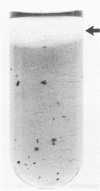Abstract
A strictly anaerobic bacterium was isolated from a continuous fermentor culture which converted the organic constituents of sulfite evaporator condensate to methane and carbon dioxide. Furfural is one of the major components of this condensate. This furfural isolate could degrade furfural as the sole source of carbon and energy in a defined mineral-vitamin-sulfate medium. Acetic acid was the major fermentation product. This organism could also use ethanol, lactate, pyruvate, or fumarate and contained cytochrome c3 and desulfoviridin. Except for furfural degradation, the characteristics of the furfural isolate were remarkably similar to those of the sulfate reducer Desulfovibrio gigas. The furfural isolate has been tentatively identified as Desulfovibrio sp. strain F-1.
Full text
PDF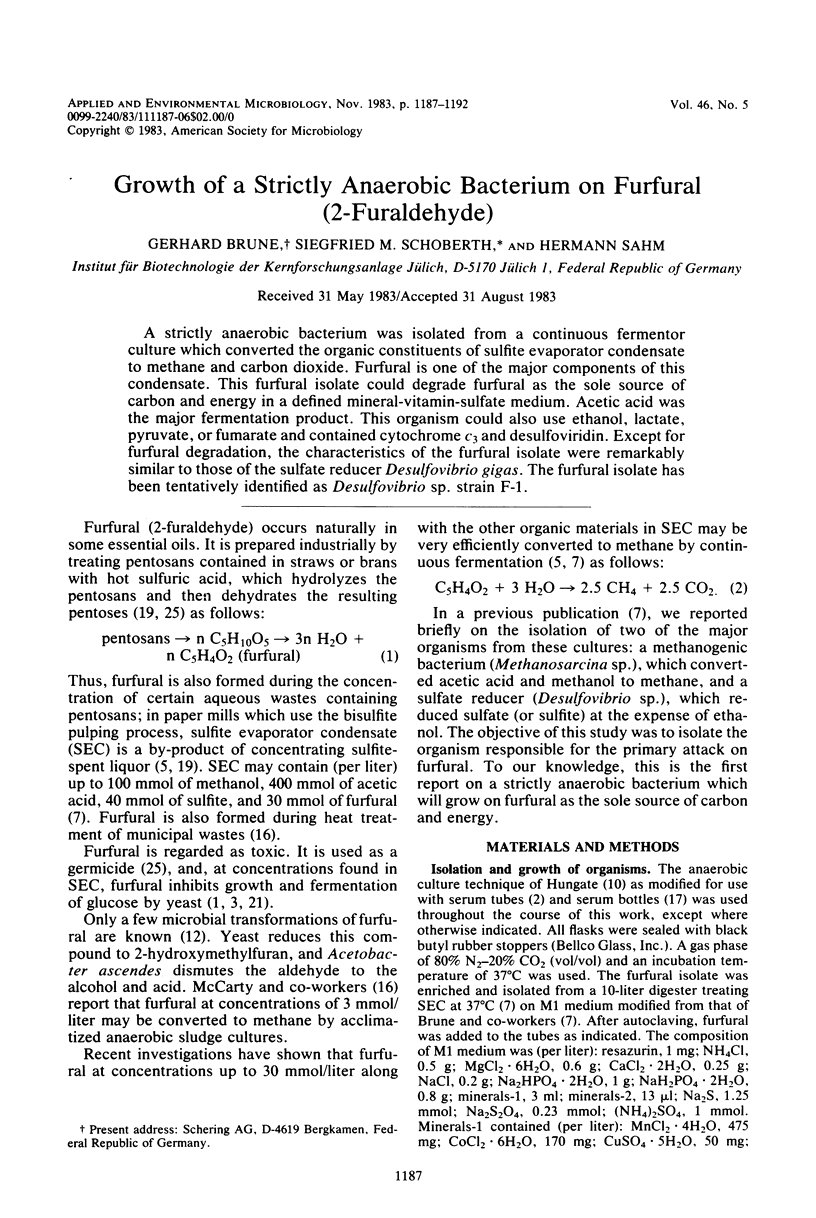
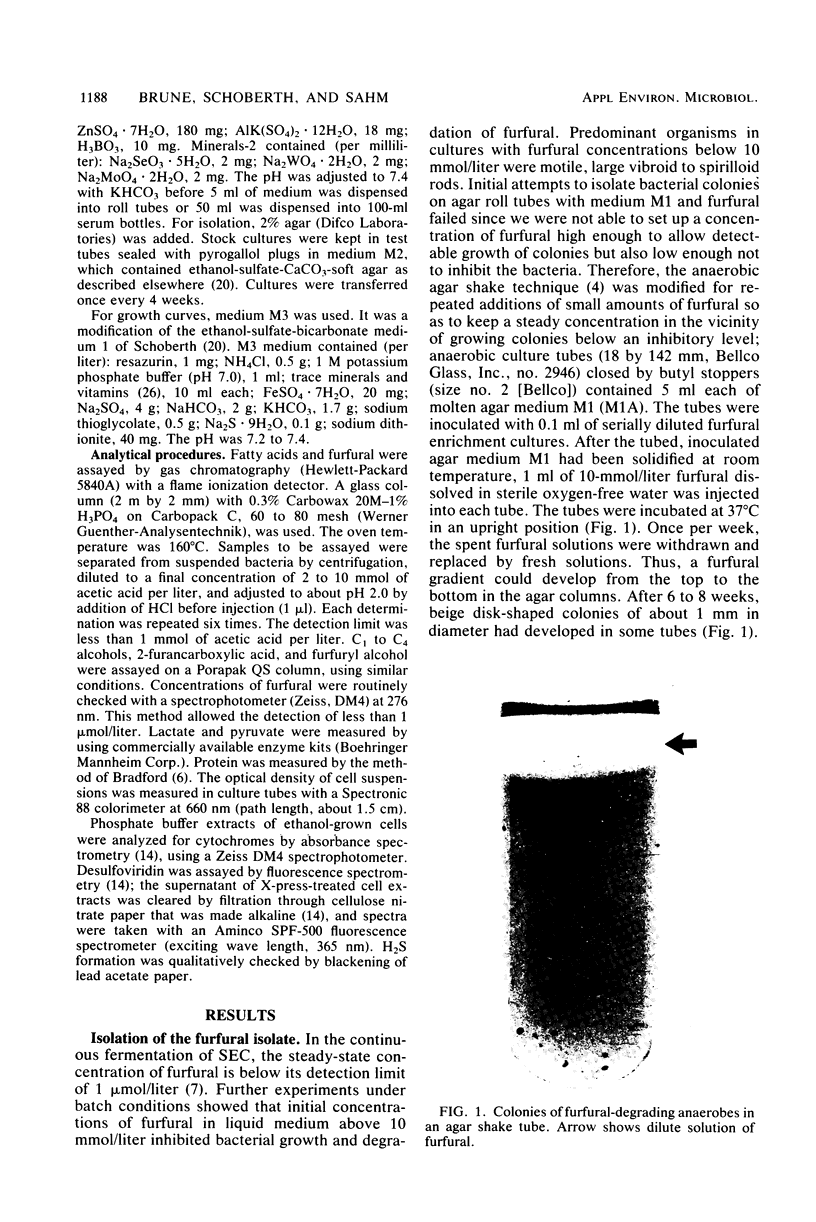
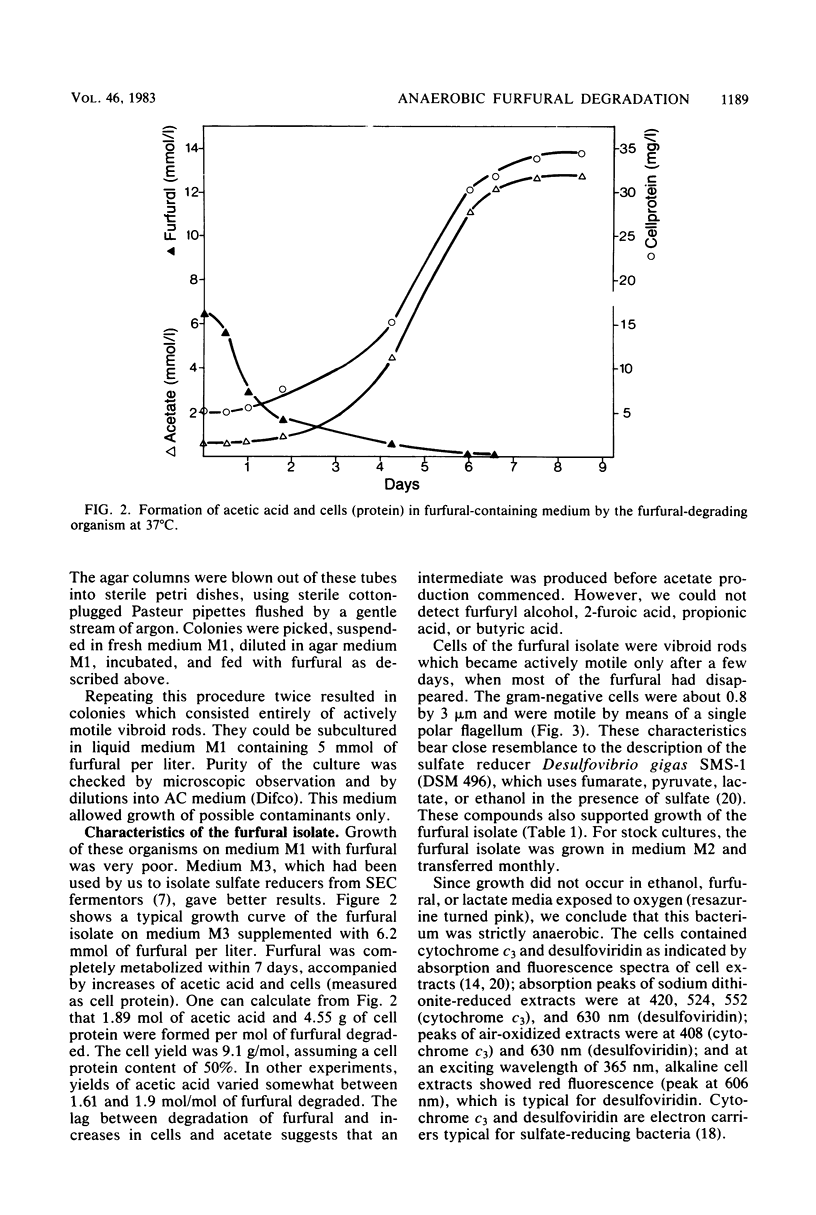
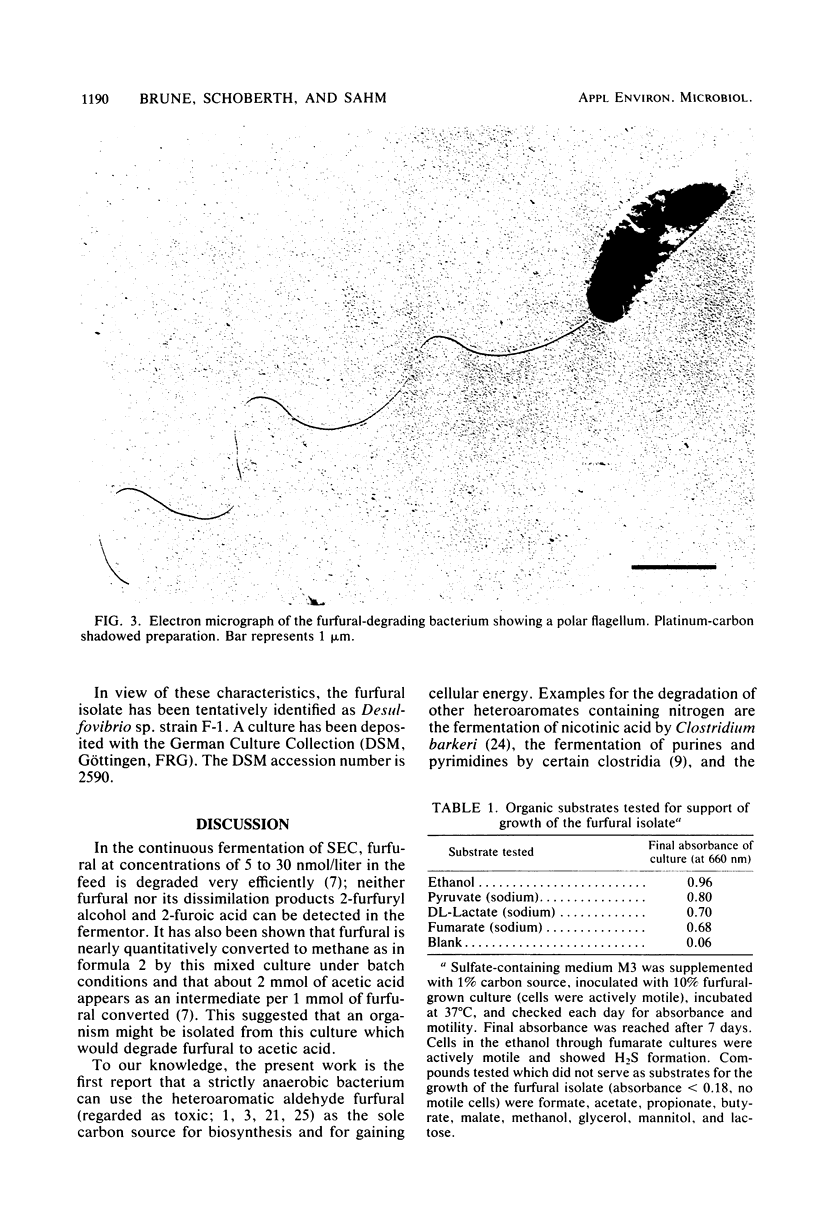
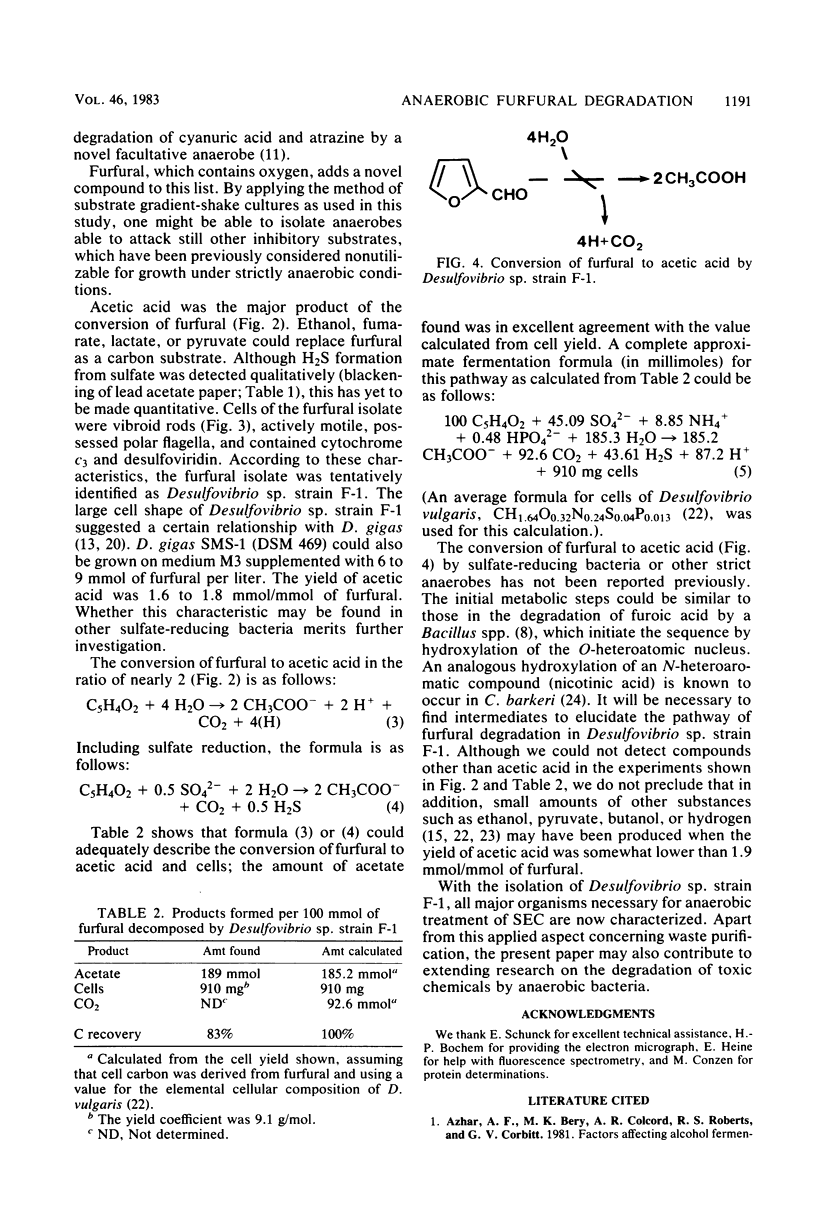
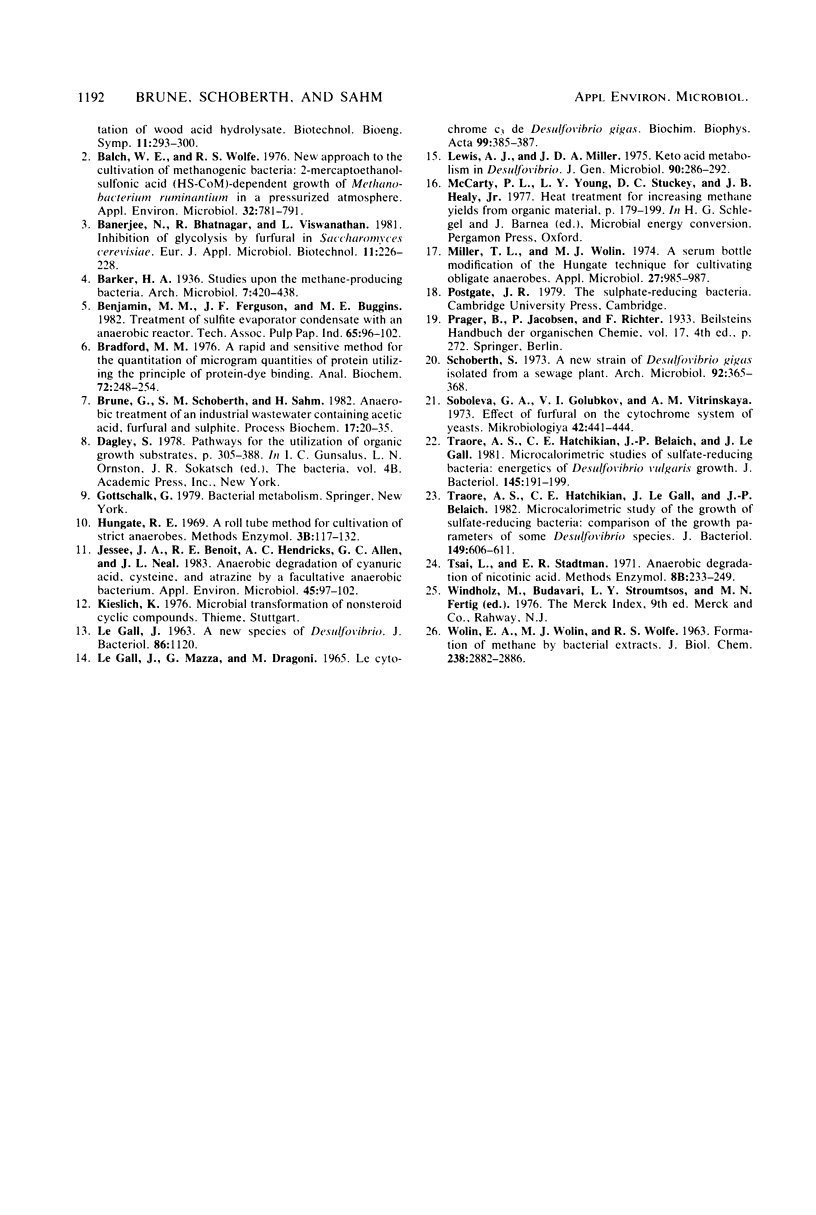
Images in this article
Selected References
These references are in PubMed. This may not be the complete list of references from this article.
- Balch W. E., Wolfe R. S. New approach to the cultivation of methanogenic bacteria: 2-mercaptoethanesulfonic acid (HS-CoM)-dependent growth of Methanobacterium ruminantium in a pressureized atmosphere. Appl Environ Microbiol. 1976 Dec;32(6):781–791. doi: 10.1128/aem.32.6.781-791.1976. [DOI] [PMC free article] [PubMed] [Google Scholar]
- Bradford M. M. A rapid and sensitive method for the quantitation of microgram quantities of protein utilizing the principle of protein-dye binding. Anal Biochem. 1976 May 7;72:248–254. doi: 10.1006/abio.1976.9999. [DOI] [PubMed] [Google Scholar]
- Jessee J. A., Benoit R. E., Hendricks A. C., Allen G. C., Neal J. L. Anaerobic degradation of cyanuric Acid, cysteine, and atrazine by a facultative anaerobic bacterium. Appl Environ Microbiol. 1983 Jan;45(1):97–102. doi: 10.1128/aem.45.1.97-102.1983. [DOI] [PMC free article] [PubMed] [Google Scholar]
- LEGALL J. A NEW SPECIES OF DESULFOVIBRIO. J Bacteriol. 1963 Nov;86:1120–1120. doi: 10.1128/jb.86.5.1120-1120.1963. [DOI] [PMC free article] [PubMed] [Google Scholar]
- LEGALL J., MAZZA G., DRAGONI N. LE CYTOCHROME C3 DE DESULFOVIBRIO GIGAS. Biochim Biophys Acta. 1965 May 18;99:385–387. [PubMed] [Google Scholar]
- Lewis A. J., Miller J. D. Keto acid metabolism in Desulfovibrio. J Gen Microbiol. 1975 Oct;90(2):286–292. doi: 10.1099/00221287-90-2-286. [DOI] [PubMed] [Google Scholar]
- Miller T. L., Wolin M. J. A serum bottle modification of the Hungate technique for cultivating obligate anaerobes. Appl Microbiol. 1974 May;27(5):985–987. doi: 10.1128/am.27.5.985-987.1974. [DOI] [PMC free article] [PubMed] [Google Scholar]
- Schoberth S. A new strain of Desulfovibrio gigas isolated from a sewage plant. Arch Mikrobiol. 1973;92(4):365–368. doi: 10.1007/BF00409290. [DOI] [PubMed] [Google Scholar]
- Soboleva G. A., Golubkov V. I., Vitrinskaia A. M. Deistvie furfurola na tsitokhromnuiu sistemu drozhzhei. Mikrobiologiia. 1973 May-Jun;42(2):441–444. [PubMed] [Google Scholar]
- Traore A. S., Hatchikian C. E., Belaich J. P., Le Gall J. Microcalorimetric studies of the growth of sulfate-reducing bacteria: energetics of Desulfovibrio vulgaris growth. J Bacteriol. 1981 Jan;145(1):191–199. doi: 10.1128/jb.145.1.191-199.1981. [DOI] [PMC free article] [PubMed] [Google Scholar]
- Traore A. S., Hatchikian C. E., Le Gall J., Belaich J. P. Microcalorimetric studies of the growth of sulfate-reducing bacteria: comparison of the growth parameters of some Desulfovibrio species. J Bacteriol. 1982 Feb;149(2):606–611. doi: 10.1128/jb.149.2.606-611.1982. [DOI] [PMC free article] [PubMed] [Google Scholar]
- WOLIN E. A., WOLIN M. J., WOLFE R. S. FORMATION OF METHANE BY BACTERIAL EXTRACTS. J Biol Chem. 1963 Aug;238:2882–2886. [PubMed] [Google Scholar]



